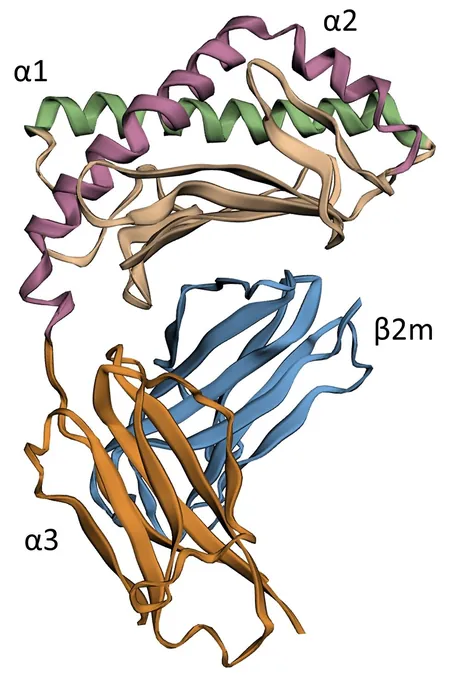
Naked Mole-Rat's Surprising Immune System Revelations: What Scientists Just Discovered!
2024-09-25
Groundbreaking Study Unveils Naked Mole-Rat's Unique Immune System Adaptations
In a groundbreaking study, researchers have uncovered that the naked mole-rat, an extraordinary underground rodent known for its remarkable longevity—living up to 40 years—has surprisingly lost several functional genes associated with the CD1 protein family. This family of genes plays a crucial role in the mammalian immune system by facilitating the body's ability to fend off infectious diseases. Published in *Biology Direct*, this discovery sheds light on the unique evolutionary adaptations of the naked mole-rat.
Understanding CD1 Proteins and Their Role
The CD1 proteins, found on the surface of certain immune cells in mammals, birds, and reptiles, share structural resemblances with major histocompatibility complex (MHC) proteins, which are integral to developing immunity. When a foreign invader, such as bacteria, penetrates the body, CD1 proteins act as identifiers, alerting T-lymphocytes to eliminate the infected cells and stop the spread of the pathogen. This alarm system resembles the waving of flags, helping the immune system recognize threats effectively.
Variability in CD1 Genes Across Species
Interestingly, the number and constitution of CD1 genes can vary significantly among different animals. For instance, while mice have two CD1 genes and rats have one, guinea pigs possess as many as nine.
Unprecedented Findings from Comprehensive Analysis
In an unprecedented move, scientists from the Baltic Federal University of Immanuel Kant, the Institute for Molecular Biology RAS, and several prestigious institutions conducted a comprehensive bioinformatics analysis of CD1 protein synthesis sequences across the genomes of 18 rodent species. They revealed that the naked mole-rat (Heterocephalus glaber) has not just altered but eliminated portions of its functional CD1 genes entirely—a phenomenon never before documented in any mammalian species.
The Naked Mole-Rat: A Model for Aging Mechanisms
This eccentric rodent not only boasts a long lifespan but is also becoming increasingly significant in the study of aging mechanisms due to its unique physiological traits. The absence of CD1 proteins hints at a potential overhaul of its immune system, indicating that the naked mole-rat employs unconventional pathways to fend off infections.
Insights from Researchers
“Recent investigations into the naked mole-rat's immune system have uncovered the absence of natural killer T cells, which are typically responsible for destroying virus- and bacteria-infected cells. Given that functional CD1 genes are essential for the maturation of these cells, it appears that the naked mole-rat's immune response operates through alternative means,” explained Alexey Zamaraev, a researcher involved in the project.
Compensatory Mechanisms in the Immune System
Zamaraev suggests that other immune cell types, particularly myeloid cells and other robust T lymphocytes, may compensate for the lack of CD1 proteins and natural killer T cells in naked mole-rats.
Evolutionary Insights on CD1 Proteins
Further analysis highlights that the diversity of CD1 proteins is particularly pronounced among representatives of the Myomorpha suborder, while their evolutionary kin in other suborders such as Sciuromorpha, Castorimorpha, and Hystricomorpha possess more homologous proteins, indicating a higher degree of evolutionary conservation.
Future Research Directions
Looking ahead, the team plans to investigate additional molecules with functions similar to CD1 proteins, specifically MR1 proteins. These proteins are crucial for presenting bacterial antigens to T-lymphocytes, expanding the understanding of immune responses in various species.
Implications for Medicine
The findings from this research not only enhance our understanding of the naked mole-rat's remarkable immunity but also pave the way for potential breakthroughs in how we activate CD1-specific T-cells and formulate targeted immune responses against a variety of pathogens. As researchers delve deeper into the enigmatic world of naked mole-rats, we may find revolutionary insights into immune responses that could reshape medicine.

 Brasil (PT)
Brasil (PT)
 Canada (EN)
Canada (EN)
 Chile (ES)
Chile (ES)
 España (ES)
España (ES)
 France (FR)
France (FR)
 Hong Kong (EN)
Hong Kong (EN)
 Italia (IT)
Italia (IT)
 日本 (JA)
日本 (JA)
 Magyarország (HU)
Magyarország (HU)
 Norge (NO)
Norge (NO)
 Polska (PL)
Polska (PL)
 Schweiz (DE)
Schweiz (DE)
 Singapore (EN)
Singapore (EN)
 Sverige (SV)
Sverige (SV)
 Suomi (FI)
Suomi (FI)
 Türkiye (TR)
Türkiye (TR)